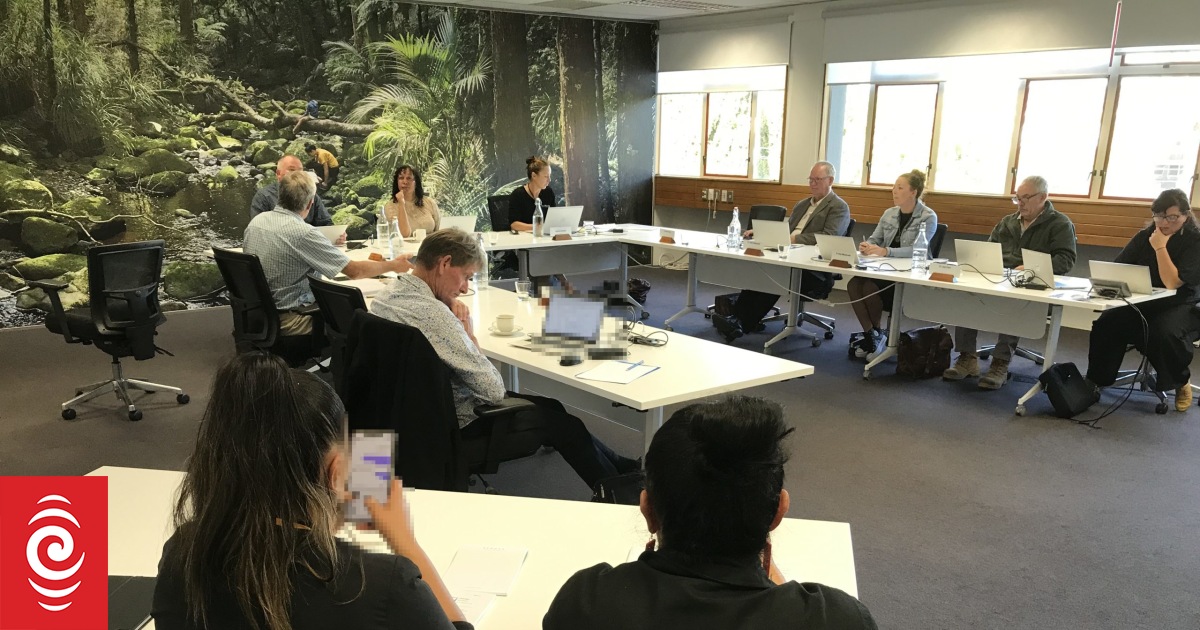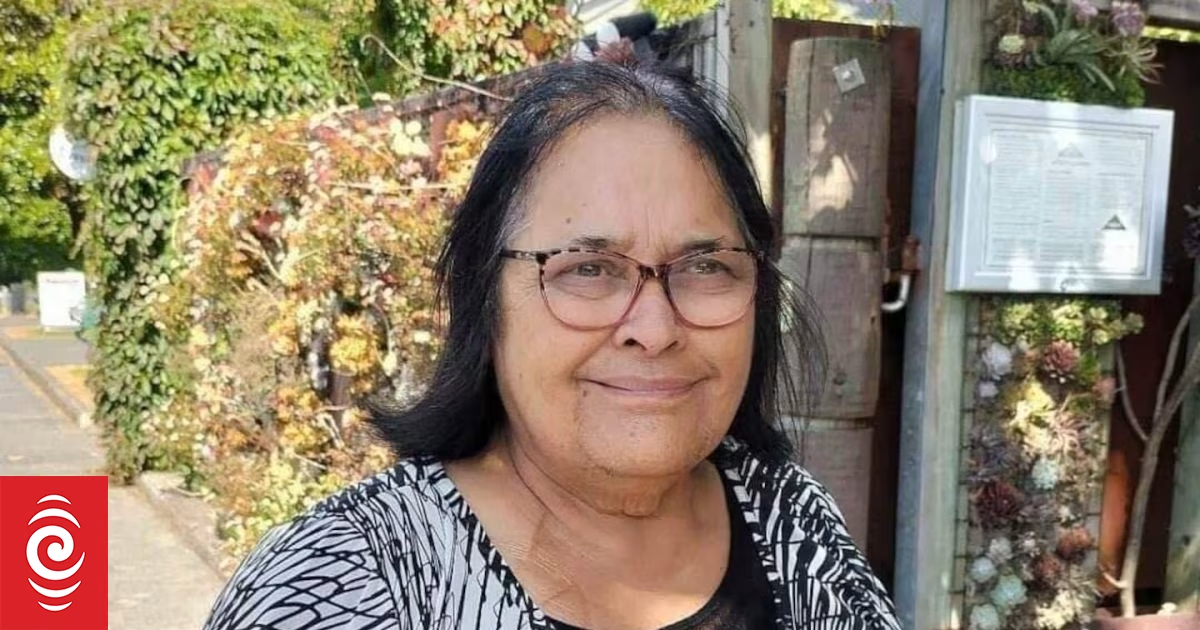
Former Whangārei mayoral candidate Alex Wright is concerned about the city’s new $59 million civic centre.
Photo: NORTHERN ADVOCATE / Tania Whyte
Whangārei’s new $59 million civic centre is a leaking monstrosity with potentially toxic black mould, a former mayoral candidate says.
Alex Wright, who stood for the Whangārei mayoralty in 2019, said the almost 500 council staff and others, who are on the cusp of starting to shift into the building should not be doing so until the potentially toxic black mould has been appropriately dealt with and the leaking which has caused it is fully repaired, to stop ongoing problems and keep staff safe.
Local Democracy Reporting Northland asked Whangārei District Council (WDC) to confirm whether the black mould – or any other mould in the building – was or was not the toxic type, how this had been verified to date, and for the date of that verification.

WDC general manager corporate Alan Adcock said that mould testing would be done before the council took possession of the building.
It was due to be taken over by the council at the end of February.
There are about 90 sub-contractors and suppliers involved in building the civic centre with more than 100 people working on the site most days.
Wright is so concerned she sought answers around the leaking and mould in an Official Information Act (OIA) request to WDC.
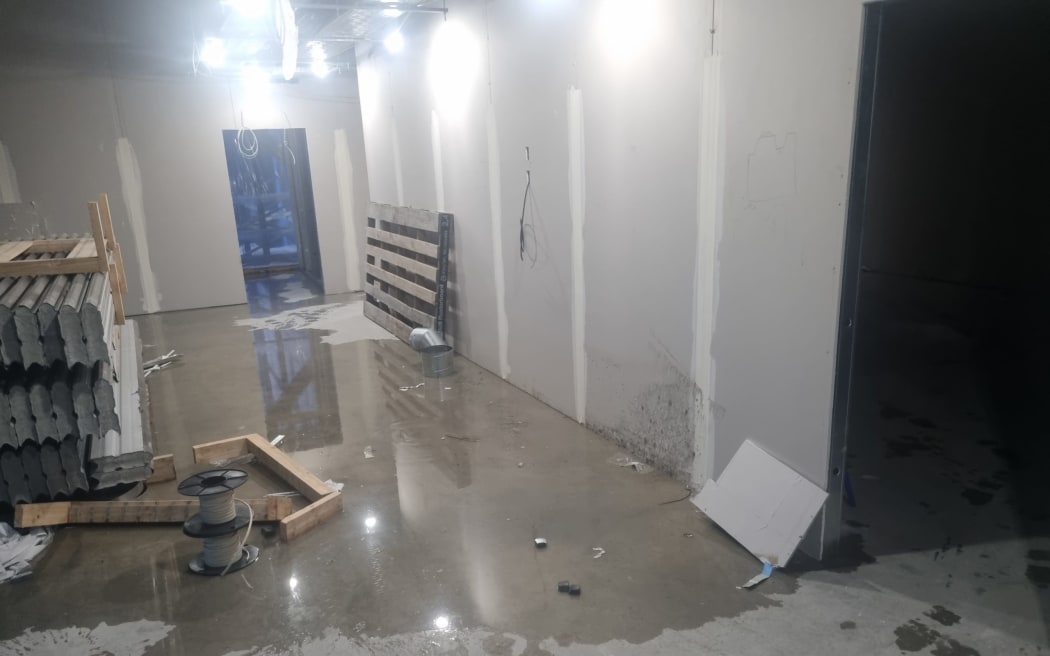
Water and mould on the walls in the civic centre.
Photo: Supplied
“I’m not one to put my head above the parapet but I’m so concerned about the situation I felt I had to,” Wright said.
“I am concerned that the building, including its roof, are only semi-watertight. Will it officially become classified as what the building industry knows as a leaky building into the future?”
“At some stages, the leaking started at the roof and went down through the building to the bottom floor,” Wright said.
In its OIA response, the council said the building contractor and separate consultants had carried out several inspections to ensure all affected work had been replaced.
Internal studs were steel, meaning council had no concerns about residual dampness which could cause mould to appear.
Adcock confirmed that water had been leaking into the building via its roof.
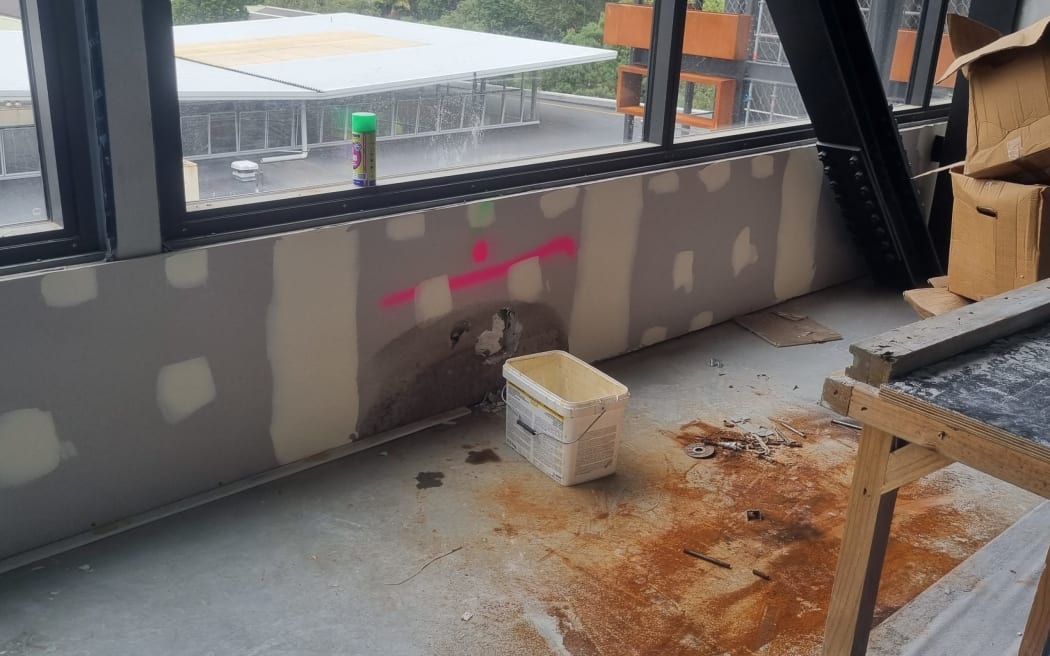
Pink dots mark plasterboard for removal in wake of water damage in the new civic centre. Some plasterboard’s been replaced several times in the same spot.
Photo: Supplied
“We were disappointed that remedial works were required to parts of the roof gutter membrane that had allowed water to enter the building,” Adcock said.
Bad weather had delayed the issue’s resolution.
He confirmed more than 150 sheets of plasterboard, two internal cabinets and other panelling in the building had been replaced.
Wright said the four-storey civic centre’s potential health risks, in combination with the cost to ratepayers from repairing the ongoing consequences of the leaking, sometimes repeatedly, needed to be addressed.
Adcock said ratepayers would not be paying for water-damaged material. Builders Canam Commercial would be paying for the full replacement of all water-damaged material at its cost.
He said specialised electronic testing had verified there were now no more leaks through the civic centre roof.
WDC was satisfied Canam Commercial was taking all necessary steps to address the leaking.
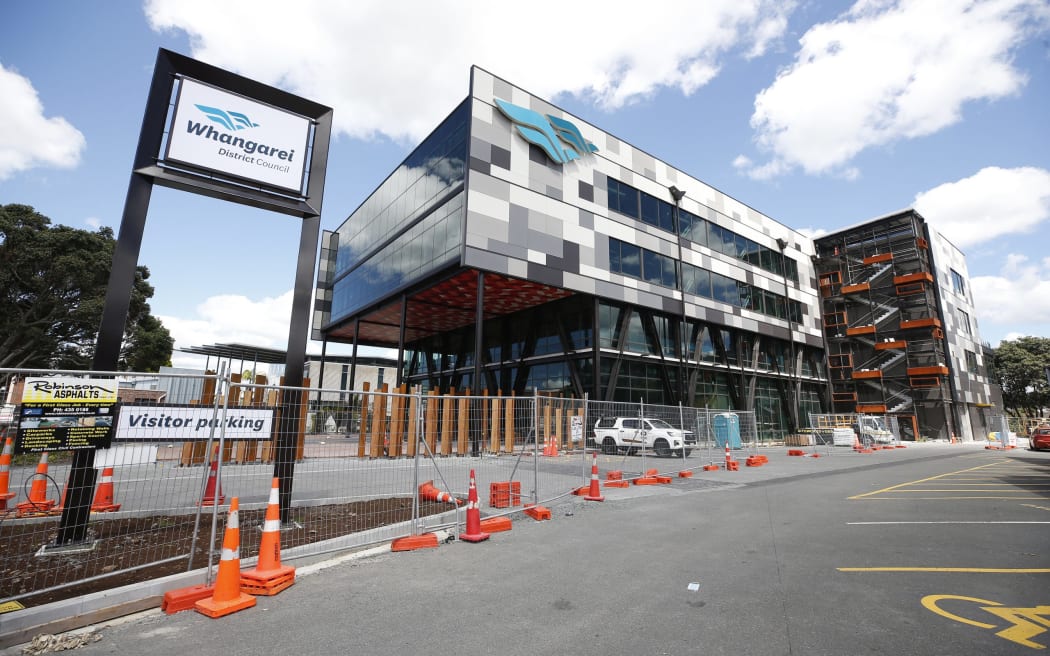
The new building will house around 500 council staff.
Photo: NORTHERN ADVOCATE / Michael Cunningham
Wright said councillors were ultimately responsible for the civic centre and knew about the building’s leaking problems but they still had not been fixed.
Adcock said civic centre leaking had been identified “some time ago” but could not be fully remediated without extended dry weather.
“The unprecedented frequency and severity of rain events meant that there was simply no opportunity to make the necessary repairs earlier. The issue has been taken extremely seriously by everyone concerned and have (sic) been addressed as soon as was practical and possible,” he said.
“It took Canam considerably longer to fix the problems than anticipated and that was simply due to the weather conditions since last September. To complete the roof repairs to our satisfaction an extended spell of dry weather of at least four consecutive days was required and this has simply not been available to Canam.
“However, given the pressure they were under to complete the building by contracted dates, they took the risk to press on with some internal works based on weather forecasts that subsequently proved to be unreliable.”
The ongoing leaking and associated issues have added further to the already-delayed date for staff to move into the building.
In January, the council said it would be finished by February with staff moving in this month.
Adcock now said the date for the shift would be late April, barring unforeseen issues.
The building was 95 percent complete, with about four more weeks needed for its completion.
The civic centre will have 470 workstations. About 370 WDC staff are scheduled to move in, with shifting staggered over several weeks.
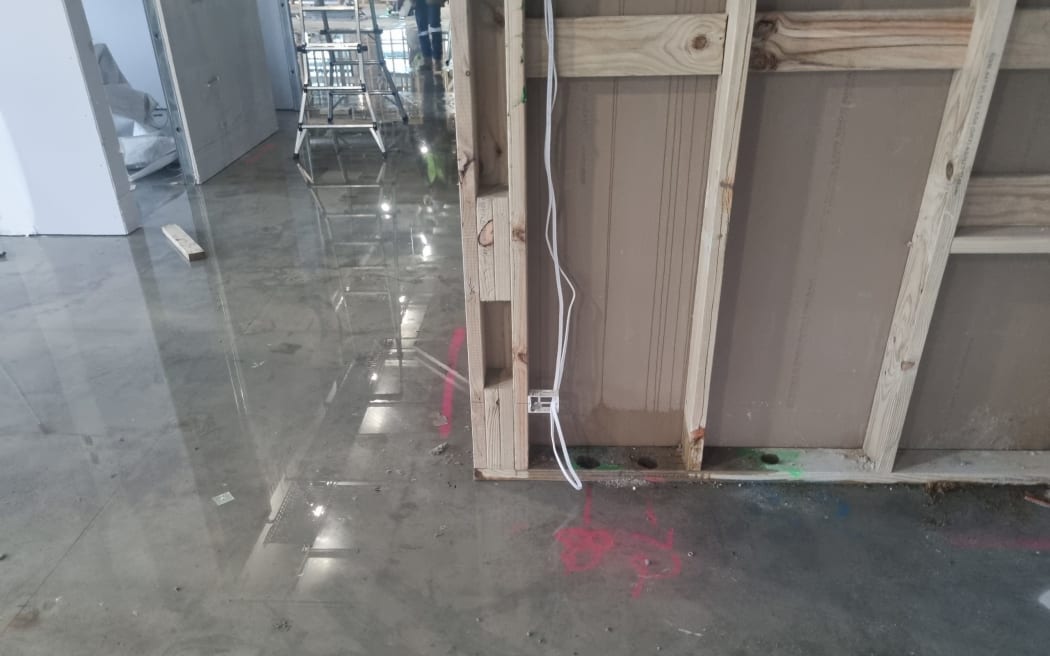
Water leaking into the new civic centre has caused problems. The leaking water can be clearly seen in this photo, on the floor and seeping up the wall.
Photo: Supplied
Fifty inter-council Northland Transportation Alliance staff from WDC, Far North District Council, Kaipara District Council and Northland Regional Council are also moving into the building.
Waka Kotahi was to move in but changed tack, staying in its Whangārei offices for now.
WDC’s mayor and 13 councillors will hold their monthly council and a wide range of other regular committee meetings in the building’s council chambers.
Members of the public and many others will also be in and out of the building.
“Council will not be taking possession of the building until we are satisfied that every aspect of the building meets the agreed specifications and quality standards,” Adcock said.
“Issues identified to date, along with various other logistical and extreme weather – related issues have pushed out the completion date, to both Canam and council’s frustration.”
Wright said there had been fungus growing on already-laid carpet in some cases.
Internal walls replaced due to black mould growing on them from water damage had in some cases had that job done without the cause of ongoing water leaks first being resolved.
Wright said wet timber at times used to frame the inside of the building’s exterior walls had not adequately dried out before plasterboard lining those walls was applied, meaning longer term damage risk.
Adcock said virtually all wall studs through the building were steel rather than wood and were exposed to drying before wall linings were reapplied so he did not believe there would be problems with this aspect of their construction.
“However, as a further precaution we will be having testing for mould done before we take possession, with ongoing testing within the subsequent defect liability period,” he said.
Wright said newly-laid carpet had often been wet during construction because of the leaking.
Water had pooled on the floor-protection plastic put down on top of carpeted floors. Installed cabinetry had to be removed due to water damage that had happened – after its installation.
“They shouldn’t have been carpeting, painting or plastering until the building was watertight,” Wright said.
She said visually mould-affected plasterboard on some internal walls had been removed and replaced, sometimes several times in the same place.
Replacement plasterboard had been put back onto affected areas without the leaking that caused the wetness and mould being fixed first.
“The buck stops with the council,” Wright said.
“What does all this mean for the longer-term future of the building?”
Wright said being a civic project meant the industry building standards used in its construction should serve as a role model for best practice throughout Northland’s wider building and construction industry.
“What hope is there for building standards in the rest of Northland if this is what things are like with the council’s own project,” Wright said.
WDC has used its own building inspectors on the civic centre job.
“WDC building inspectors are responsible for ensuring the building meets all required standards, with their interaction with the project kept totally independent of council staff overseeing the project from a customer perspective,” Adcock said.
Local Democracy Reporting is Public Interest Journalism funded through NZ On Air


